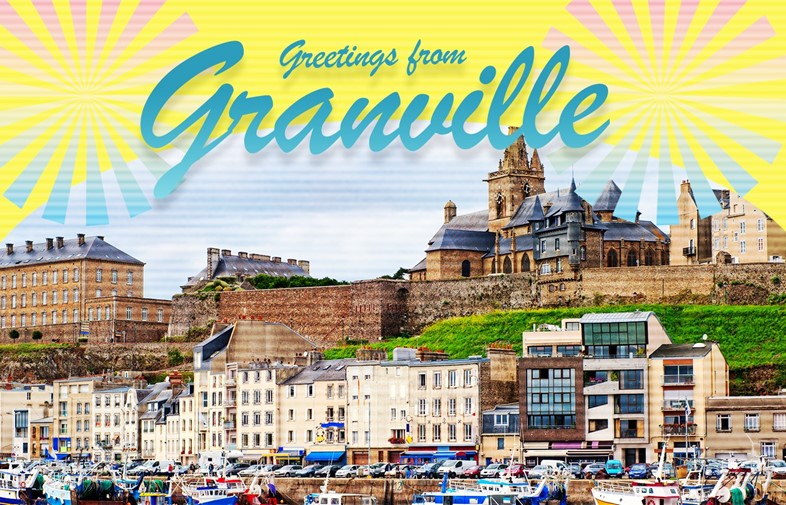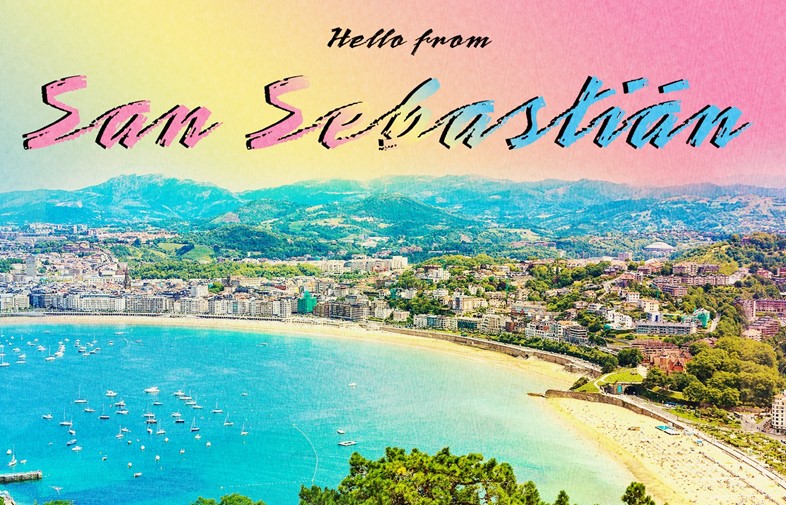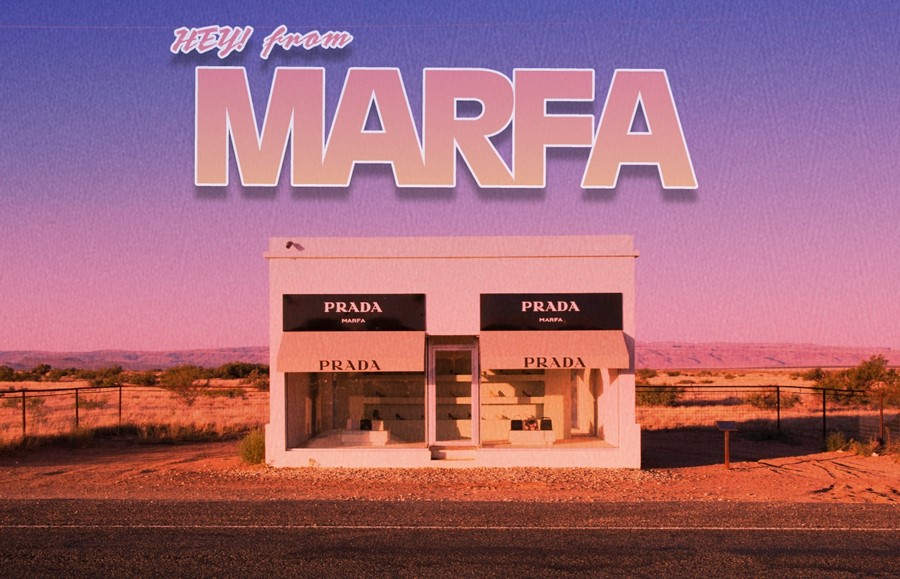From a Prada store in the desert to Coco Chanel’s holiday home, summer pilgrimages for the insatiable fashion fan
Spiritual awakening needn’t be restrained to bathing in holy waters or climbing marble steps on your knees in penance. The summer season provides ample opportunity for pilgrimages of an entirely different kind. Namely, fashion – and not simply to your nearest boutique. Here, in lieu of more typical last minute holiday suggestions, five destinations particularly sacred to fashion history, from the seafront birthplace of Cristóbal Balenciaga to a Prada outpost in the Texan desert.
1. Marfa, Texas, United States (above)
Two kilometres to the northwest of Valentine, Texas – population 134 – you will find Prada Marfa, the Prada store that isn’t. Those driving along the state’s Highway 90 will see it appear in the distance like a strange mirage, a solitary Prada storefront set among the desolate landscape of the state’s Chihuahua desert. Those hoping for an unexpected shopping opportunity will be disappointed, though – Prada Marfa is in fact an entirely impenetrable sculpture by Berlin artists Michael Elmgreen and Ingar Dragset built in 2005, a comment on consumerism and the visual signifiers which define it. In typical style, Mrs Prada – though not involved with the commission – gave her blessing, and even selected the shoes which sit in the window from her fall collection that year.
The desert outside of the town of Marfa, 26 miles from Prada Marfa itself, has become an unlikely hub for contemporary art, much down to the enormous sculptures by Minimalist artist Donald Judd which punctuate the landscape. (He came to the desert town to escape the art scene of 1970s New York and developed the Chinati Foundation, a modern art museum in the area which still operates under Judd’s principles.) A break from art is offered with the area’s very own phenomenon, the ‘Marfa lights’ – ghostly glowing orbs which remain unexplained, and for which conspiracy theories abound.

2. Granville, Normandy, France
On the windswept northern coastline of France you will find Villa les Rhumbs, the robust ocean-facing home where a young Christian Dior began his life. Found in the town of Granville, Normandy, Dior remained adoring of the pink-tinted home long after it was sold to the town in 1932. “I have most tender and amazed memories of my childhood home,” the designer would write in his memoir, Christian Dior and I. He held a particular fondness for the garden, nurtured against the odds of a less than favourable climate by his mother into an idyll populated with delicate lily of the valley and white roses, the scents of which would provide notes for the house’s memorable fragrances Miss Dior and Diorissimo. (Miss Dior provides the scent of the Christian Dior Museum, which now occupies the home.) “My life and style owed almost everything to Les Rhumbs,” Dior remembered. “It stood on a cliff and found itself exposed to atmospheric turmoil, just like how my life – which has not been calm – would turn out to be.”

3. San Sebastián, Basque County, Spain
The house of Balenciaga might now be most readily associated with the city of Paris, but it began in another locale entirely – the Basque beach town of San Sebastián, Spain where Cristóbal Balenciaga first created gowns for the women who promenaded along the seafront in the early 20th century. The couturier was born close by in the fishing town of Gateria, learning his eventual trade from his mother, who worked as a seamstress, before becoming an apprentice to a local tailor aged 12. But it was his introduction to Marchioness de Casa Torres and her subsequent patronage which would begin his career – with her help he opened his first store in San Sebastián in 1919. There, he catered for the region’s rich, including a series of gowns for the Spanish royal family, demonstrating the beginnings of his masterful command of fabric which would come into full fruition in Paris (he later moved there to escape the Spanish Civil War). Just moments from where the designer grew up in Gateria exists the Balenciaga Museum, celebrating the distinct visual language of his creations.

4. Jardin Majorelle, Marrakesh, Morocco
Yves Saint Laurent first visited Marrakesh in 1966, though his love affair with the city would continue for decades afterwards. It was during this first trip – undertaken with his partner Pierre Bergé – that he discovered the Jardin Majorelle, a botanic garden in the middle of the city and the life’s work of French artist Jacques Majorelle. “We quickly became very familiar with this garden, and went there every day,” Saint Laurent said. “It was open to the public yet almost empty. We were seduced by this oasis where colours used by Matisse were mixed with those of nature.” As such, the colours – particularly the intense shade of blue which is most associated with the garden, bleu Majorelle, after the owner – would seep into his collections and eventually define his work.
Saint Laurent would find endless inspiration in Jardin Majorelle – so much so that when in 1980 its survival was threatened by the building of a neighbouring hotel, Saint Laurent and Bergé purchased both the garden and the villa next door, returning throughout their lives. Now, after the passing of both men, the Jardin Majorelle remains devoted to their attachment to the city – and in 2017 was joined by the Musée Yves Saint Laurent, which sits just moments along the street, fittingly titled Rue Yves Saint Laurent.

5. Roquebrune-Cap-Martin, Côte d’Azur, France
In 1928, Coco Chanel purchased a five-acre plot of land on France’s Côte d’Azur, in the clifftop commune of Roquebrune-Cap-Martin, where she would spend the next decade perfecting a seven-bedroom holiday estate that looked out over the Mediterranean coastline. Designed by Robert Streitz, with frequent input from Chanel herself, La Pausa (named for the story that Mary Magdalene “paused” there after the crucifixion of Jesus) would provide the designer with an escape from the world of Parisian fashion. Returning there each month, La Pausa would also become a reflection of her collections – built in the style of Aubazine, the former abbey and orphanage where a young Chanel grew up, it had a simple elegance far away from the grand demonstrations of wealth elsewhere on the Riviera.
Though present-day tourists are unable to follow in the footsteps of Pablo Picasso, Salvador Dalí and Luchino Visconti, who were all invited as guests to the now closed-off home, visitors to Roquebrune-Cap-Martin can enjoy instead enjoy the Promenade Le Corbusier, a picturesque coastal walk, or alternatively cross the border to Monaco (just a few miles away) and enjoy a spot of shopping in Monte Carlo, where you will happily find your nearest Chanel boutique.
